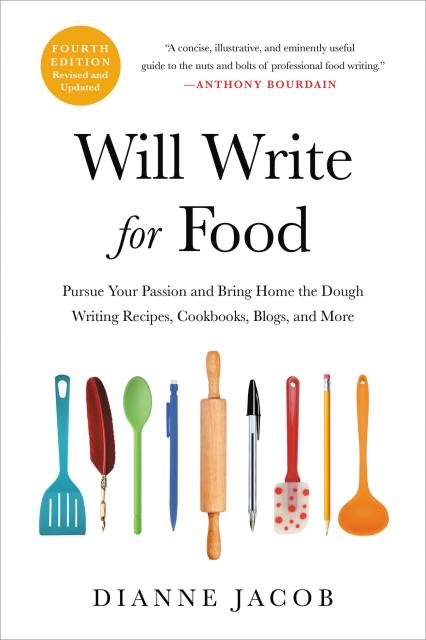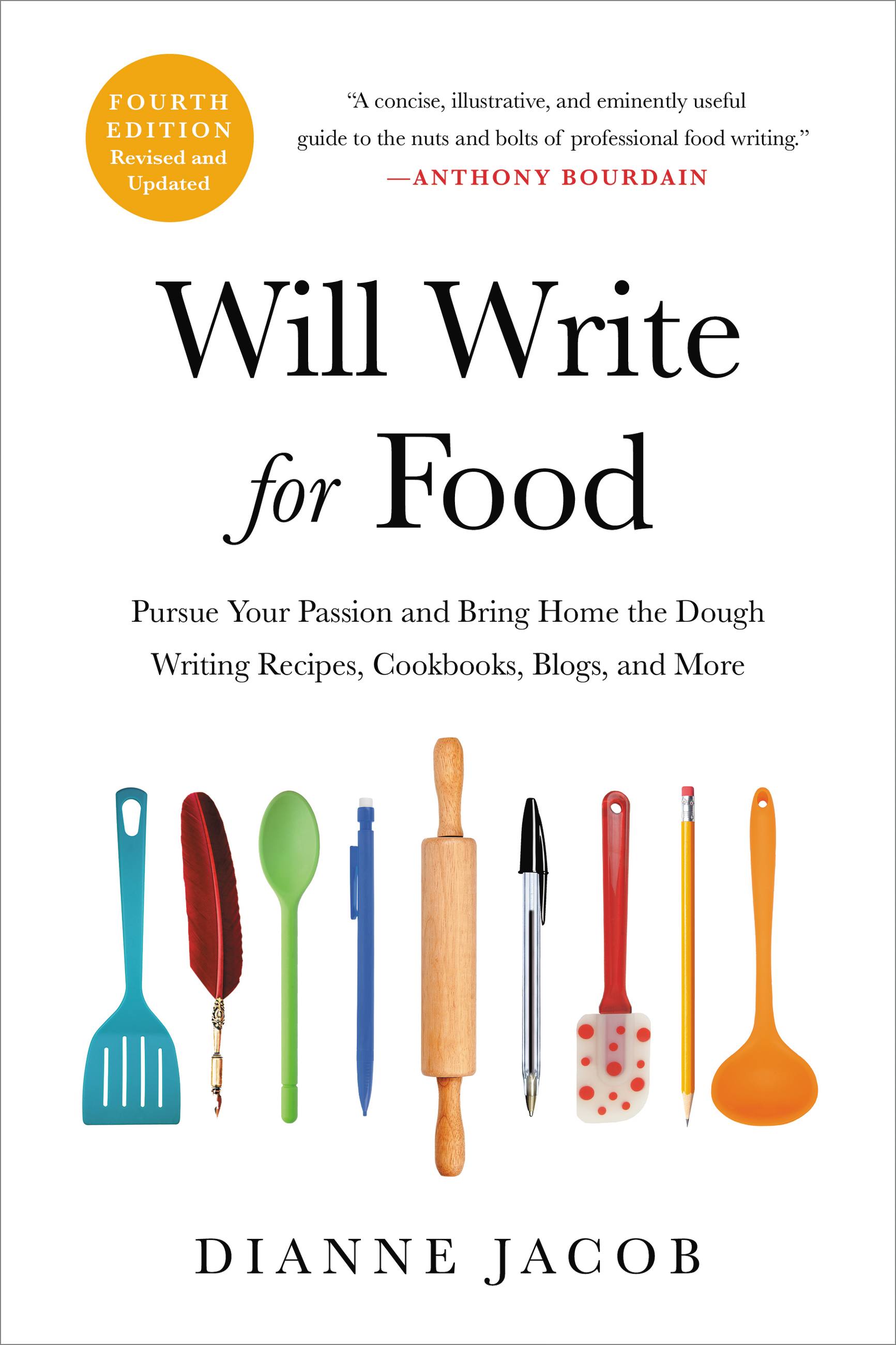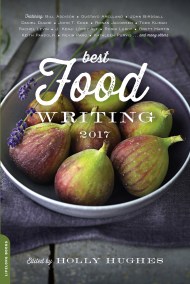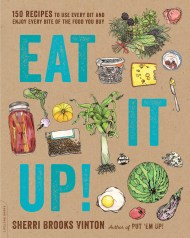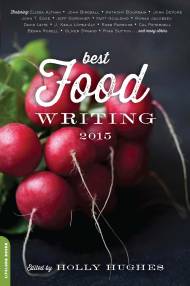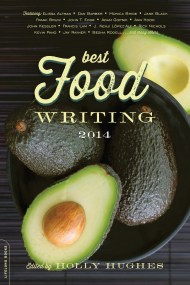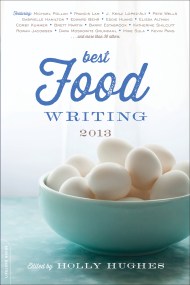Promotion
Use code MOM24 for 20% off site wide + free shipping over $45
Will Write for Food
The Complete Guide to Writing Cookbooks, Blogs, Memoir, Recipes, and More
Contributors
By Dianne Jacob
Formats and Prices
Price
$12.99Price
$16.99 CADFormat
Format:
- ebook $12.99 $16.99 CAD
- ebook (Revised) $11.99 $15.99 CAD
- Trade Paperback $18.99 $23.99 CAD
This item is a preorder. Your payment method will be charged immediately, and the product is expected to ship on or around July 14, 2015. This date is subject to change due to shipping delays beyond our control.
Also available from:
The go-to soup-to-nuts guide on how to really make money from food writing, both in print and online
With recipe-driven blogs, cookbooks, reviews, and endless foodie websites, food writing is ever in demand. In this award-winning guide, noted journalist and writing instructor Dianne Jacob offers tips and strategies for getting published and other ways to turn your passion into cash, whether it’s in print or online. With insider secrets and helpful advice from award-winning writers, agents, and editors, Will Write for Food is still the essential guide to go from starving artist to well-fed writer.
Genre:
-
"I quite often recommend and give a copy of Will Write for Food to new authors...it's a terrific introduction to cookbook writing."Robert McCullough, Publisher, Appetite by Random House
-
"Dianne Jacob has presented budding food writers with a clear blueprint on how to get started in the business."Michael Bauer, Executive Food and Wine Editor, San Francisco Chronicle
-
"My only complaint about Will Write for Food-and it's a big one-is that it wasn't around when I started my career. If you're serious about becoming a food writer, save yourself years of banging your head against the wall in frustration and run to the checkout with this book now."David Leite, food writer and publisher and editor of Leite's Culinaria
-
"Required reading for everyone interested in learning how to translate their passion for food into words. Dianne Jacob offers up a smorgasbord of practical advice for anyone who has ever aspired to write about food, and she shows how to make writing a tasty and lucrative pastime."Darra Goldstein, founding editor, Gastronomica magazine
-
"I wish I'd read Dianne's book before I started a tiny little food blog on a whim years ago. For current and aspiring food writers, it's positively dripping with helpful advice and information!"Ree Drummond, author of The Pioneer Woman Cooks and thepioneerwoman.com
-
Deb Perelman, author of The Smitten Kitchen Cookbook and smittenkitchen.com
"Whenever someone emails me about how to pursue a career in food writing, I politely tell them they're in the wrong place, that I have no idea what I'm doing, and to buy this book instead." -
"A thorough tour through the increasingly dense jungle of food writing...invaluable to all writers who want a new or bigger audience for their work, whether in digital form, in blogs, in magazines, in cookbooks, or in food memoir."Michael Ruhlman, ruhlman.com and coauthor of The French Laundry Cookbook
-
"Will Write for Food is a great gift, not just for those who are new to food writing, but for those already ensconced in the business. Dianne's clarity, kind suggestions, and nudges and admonitions to work well are truly inspiring."Deborah Madison, author of Vegetarian Cooking for Everyone
-
"After writing a successful blog for over a decade, writing four books, and still expanding my business, I really do credit this book with giving me the hope I could do this."Shauna James Ahern, Gluten-Free Girl and the Chef
-
"This book does a great job of covering the nuts and bolts of food writing, for sure, but Jacob delivers much more than the usual advice: She shoots straight about the realities of the business, provides loads of insider insights and practical exercises, and radiates enough genuine enthusiasm to get both beginning writers and seasoned pros up and at 'em."Martha Holmberg, cookbook author and former publisher, Fine Cooking magazine
-
"You'll find everything you need to know about becoming a food writer in this indispensable information-packed book. And if you're already a food writer, this book will help you become a better one. Useful writing exercises concluding each chapter help sharpen your skills. If food writing is your passion, then grab a copy of Will Write for Food and get busy!"Greg Patent, author of Baking in America
-
"Practical, accessible, and insightful, Will Write for Food is an absolute "must-have" for anyone interested in making either side income or a solid living from culinary writing!"Midwest Book Review
-
"If you're a foodie who loves to write, then Dianne Jacob's Will Write for Food is a treasure trove of practical tips and techniques for those looking to thrive and survive in the food writing arena. This book...takes you through the process of setting up a blog, reviewing free products, going solo as a freelance writer, mastering the art of recipe writing and different approaches for restaurant writing. That's just the tip of the iceberg."BookTrib
- On Sale
- Jul 14, 2015
- Page Count
- 352 pages
- Publisher
- Da Capo Lifelong Books
- ISBN-13
- 9780738218069
Newsletter Signup
By clicking ‘Sign Up,’ I acknowledge that I have read and agree to Hachette Book Group’s Privacy Policy and Terms of Use
